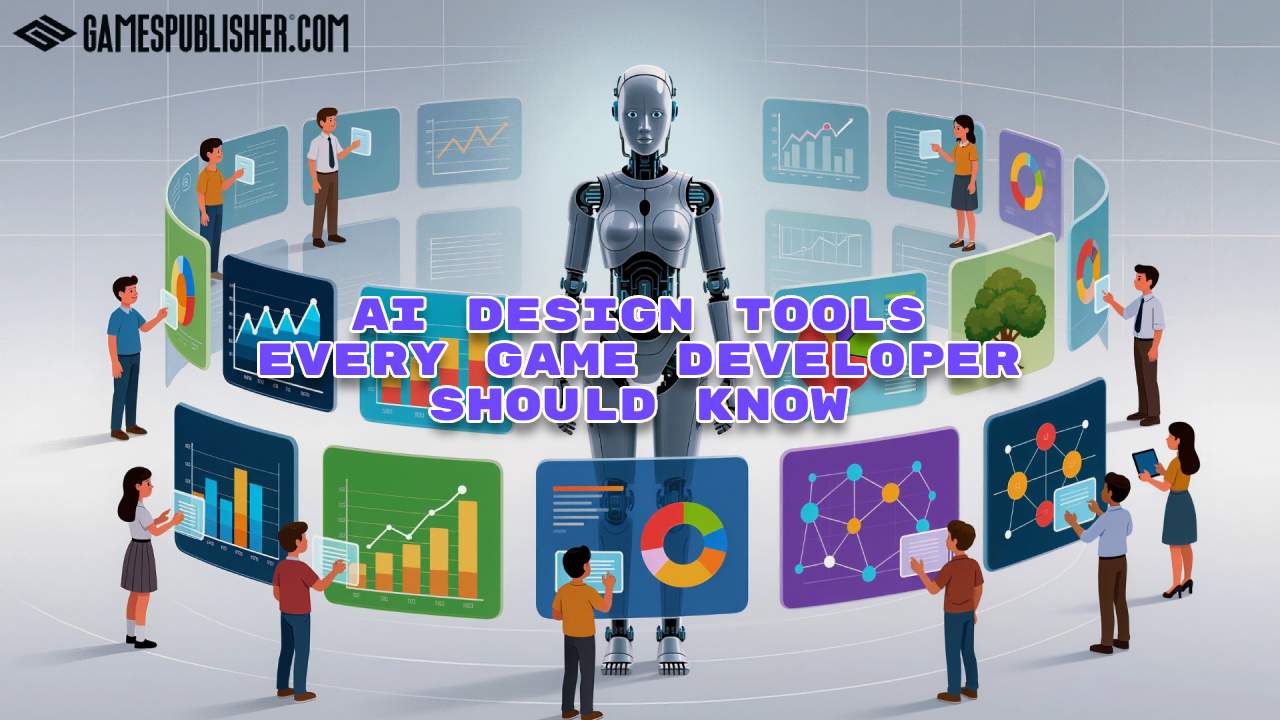At Gamespublisher.com, we spotlight the tools and technologies shaping the future of game development, and few innovations are moving faster than AI design tools.
As modern games grow more complex across visuals, mechanics, and narrative depth, developers are turning to AI to streamline production, automate repetitive tasks, and unlock new creative possibilities.
From indie creators working on their first prototype to large studios managing massive pipelines, AI tools are transforming how teams brainstorm ideas, build assets, test gameplay, and fine-tune player experiences in the AI in gaming industry.
These tools aren’t just optional add-ons anymore; they’re becoming essential for staying competitive as developers explore how AI is used in gaming.
AI Design Tools and Their Impact on Modern Game Development
As game development becomes more complex, AI design tools are stepping in to help teams build smarter, faster, and more creatively than ever before.
What Are AI Design Tools?
AI design tools are software systems that use machine learning, procedural algorithms, and generative AI to support or automate various stages of game making AI pipelines. They can:
- Generate environments, textures, and 3D assets
- Assist with character design, animation, and sound
- Build dynamic stories and dialogue using NLP
- Simulate playtests and detect balance issues
- Optimize UI/UX and accessibility features
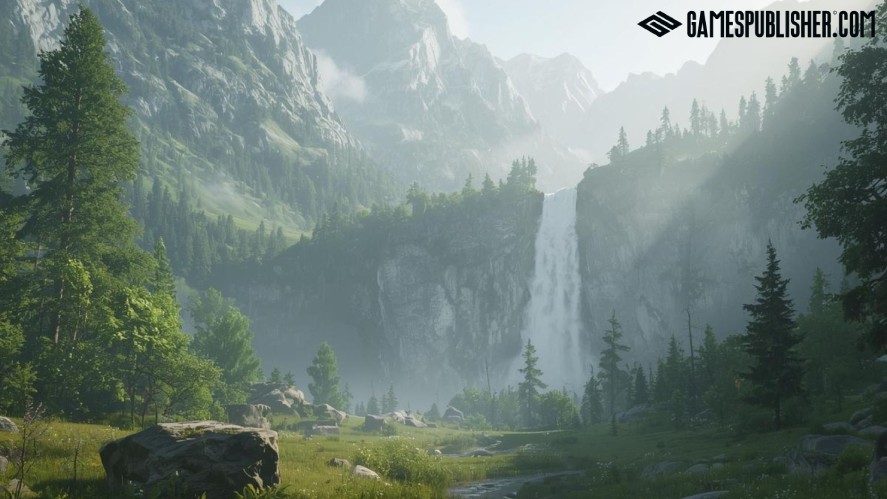
In short, AI tools help developers work faster, scale ideas effortlessly, and iterate without the usual bottlenecks in traditional pipelines.
Why AI Tools Matter in Game Design Today
AI is reshaping game development for one simple reason: it multiplies what teams can accomplish.
Whether it’s speeding up prototyping, reducing manual workload, or enhancing creativity, AI makes it easier to deliver polished, player-ready content.
AI improves productivity by automating mundane tasks, freeing artists and designers to focus on high-impact creative work, which is especially useful for teams developing AI games online.
It enhances player experience through adaptive difficulty, smarter NPC behavior, and dynamic narrative systems.
And most importantly, AI tools allow developers to prototype, test, and refine ideas much faster. That’s why AI is critical in an industry where innovation and speed determine success.
AI Design Tools in Environment and Asset Creation
AI-driven worldbuilding has become one of the most transformative areas in modern game development. It allows teams to create vast, detailed environments and high-quality assets in a fraction of the time.
AI Design Tools for Procedural World Generation
Tools like Promethean AI and NVIDIA Omniverse help developers generate environments: everything from terrain and vegetation to architectural layouts.

These systems can populate levels with objects, generate realistic lighting, and even adapt world geometry based on gameplay flow. They dramatically speed up the early stages of level design.
Creating Game Assets Using AI
AI platforms such as Leonardo AI, Scenario.gg, and various GAN-based pipelines allow developers to produce character concepts, textures, icons, 3D models, and even animation-ready assets, effectively functioning as AI-powered graphic design tools for game development.
For smaller teams, this eliminates bottlenecks in concept art and asset creation, while larger studios use these tools to accelerate iteration during pre-production.
Case Studies of AI-Created Worlds
A notable inspiration is No Man’s Sky, which popularized the use of procedural systems to generate a universe of planets, creatures, and ecosystems.

While not fully AI-driven, it paved the way for studios experimenting with AI-assisted worldbuilding.
Today, prototypes created using Promethean AI demonstrate entire interior spaces generated with minimal human input. They show how close fully AI-generated levels are to becoming mainstream.
AI Design Tools in Narrative and Dialogue Systems
AI is reshaping storytelling in games, helping writers and designers craft richer, more dynamic narratives without overwhelming scripting demands.
Automating Game Dialogue with AI
NLP-driven systems like Inworld AI and Convai can create adaptive, responsive NPC dialogue that changes based on player choices, personality traits, or in-game events.
These tools help build lifelike NPCs that engage players with natural speech patterns, emotional tone, and contextual reactions.
AI Writing Assistants for Game Scripts
GPT-based tools and platforms like NovelAI support the creation of branching narratives, lore documentation, character arcs, and questlines.

They assist writers by generating variations of scenes, suggesting plot paths, or even drafting dialogue that designers refine into final script form.
This speeds up ideation, supports worldbuilding, and reduces narrative bottlenecks during development.
AI Design Tools in Game Testing and Balancing
AI is reshaping how developers test, tune, and refine their games, making quality assurance more efficient and data-driven than ever before.
Automated Playtesting and Bug Detection
AI-powered test agents can simulate thousands of gameplay sessions in minutes, uncovering issues that human testers may not catch early on.
These tools navigate levels, stress-test environments, interact with objects, and push game systems to their limits. They reveal design flaws, botched triggers, pathfinding issues, or unintended difficulty spikes.
By automating this process, developers can identify bugs and usability problems far earlier in the pipeline, reducing last-minute crunch and post-launch fixes.
Balancing Game Mechanics with Machine Learning
Machine learning models analyze vast amounts of gameplay data to recommend or automatically adjust difficulty curves, weapon stats, enemy AI behavior, and in-game economies.
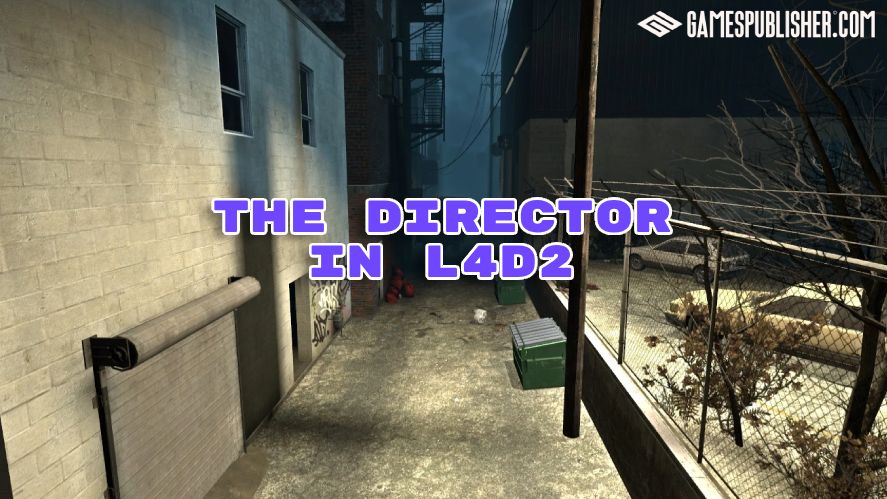
These systems help maintain fair progression, prevent exploits, and ensure gameplay remains enjoyable for players of different skill levels.
For live-service titles, AI balancing tools are especially valuable. They allow developers to update gameplay dynamically based on real-time player behavior.
AI Design Tools for UI/UX and Game Accessibility
AI is also elevating how players interact with games by making interfaces smarter, cleaner, and more inclusive.
Smart UI Generation with AI
Some AI-driven UX/UI design tools now use AI to automatically generate UI layouts, adapt menus based on user preferences, or rearrange interface elements for clarity and performance.
By analyzing player behavior, some of the best AI tools for UI design can recommend improved button placements, streamline navigation, or personalize the UI for different playstyles.
Accessibility Enhancements Through AI
AI-driven accessibility features are becoming increasingly important.
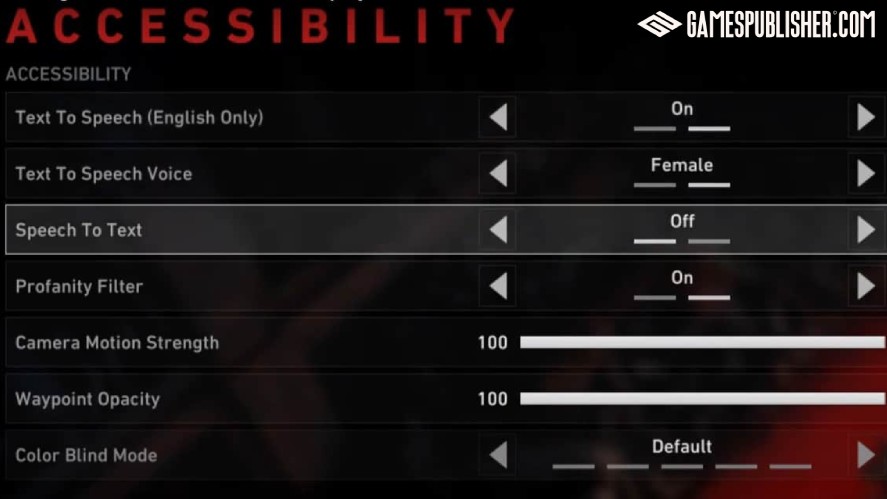
Tools leveraging text-to-speech, speech-to-text, voice control, and real-time visual enhancements help games become more playable for a wider audience.
AI can also adjust color palettes for colorblind users, caption dynamic audio, or simplify complex UI elements. In the end, they create a more inclusive experience across all video game genres.
Popular AI Design Tools for Game Developers
AI-powered design tools are becoming standard in modern game development workflows, and developers often look for the best AI design tool online free for rapid experimentation.
Here are some of the most widely adopted solutions across the industry.
Promethean AI

Promethean AI is a next-generation environment-building assistant that helps artists create scenes dramatically faster.
Instead of manually placing props, furniture, and architectural elements, developers can describe what they want in natural language, and Promethean auto-generates assets or arranges existing ones from the project library.
It’s especially valuable for large studios creating many levels or for indie developers who want AAA-quality world-building without a huge team.
Promethean also learns from the studio’s art style and placement preferences, making it smarter over time.
Scenario.gg
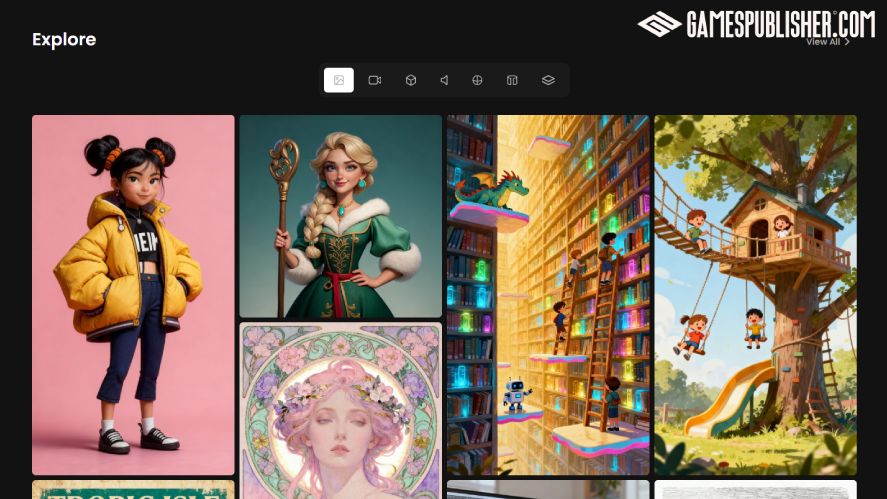
Scenario.gg focuses on generating consistent art assets for games, something generic AI image tools struggle with.
It allows developers to train custom models on their own art style, ensuring that every generated asset fits the visual direction of the game. The tool is ideal for mobile, indie, and stylized games where visual consistency is critical.
Developers can produce hundreds of variations for rapid iteration or prototype without needing a full art pipeline.
Leonardo AI
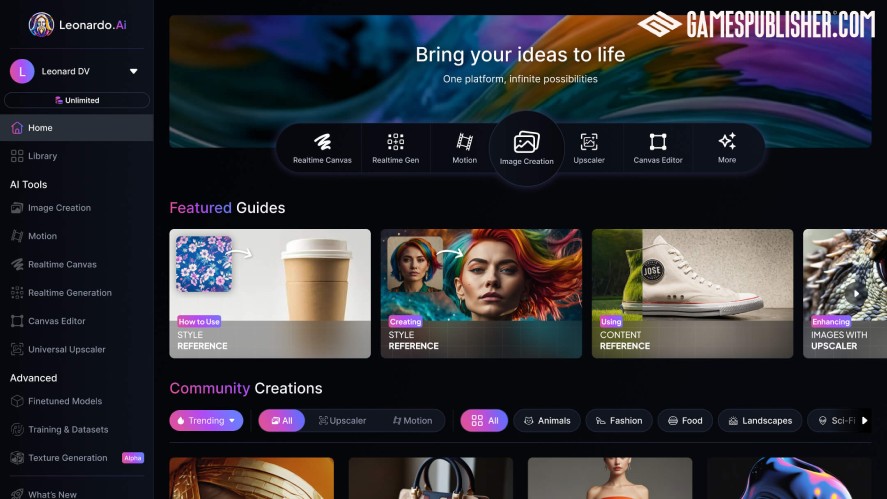
Leonardo AI is a high-end image and asset generator used for concept art, textures, and even pseudo-3D references.
It offers fine-tuned models for fantasy, sci-fi, anime, and realistic art styles, and supports tools like texture generation, upscaling, and background removal.
With workflows tailored for game developers, it helps speed up ideation, moodboards, and even in-game 2D assets. Many teams use it to rapidly prototype multiple visual directions before committing to production.
Inworld AI
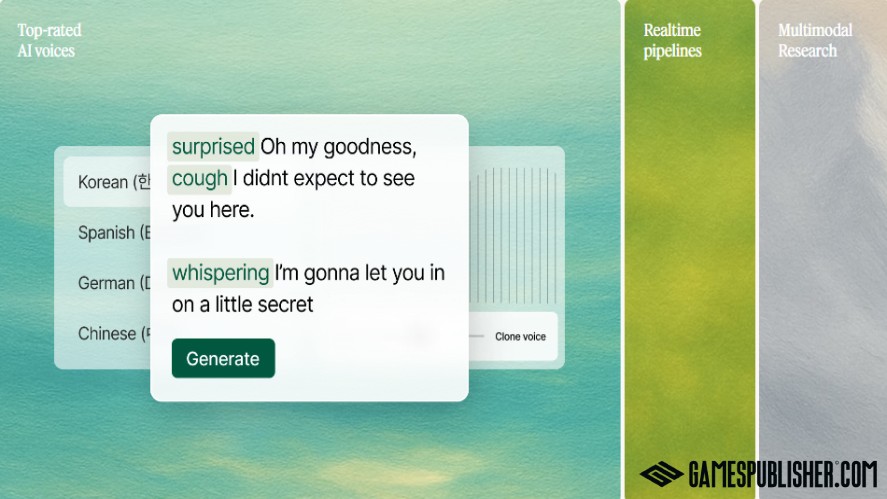
Inworld AI brings characters to life by giving them personalities, goals, emotions, and context-aware dialogue.
Instead of static dialogue trees, NPCs can respond dynamically to player behavior and story progression. Game teams can define lore, backstory, and voice traits, and Inworld turns that into real-time interactive dialogue.
This is especially powerful for RPGs, open-world games, social simulators, and narrative-driven experiences that want more reactive worlds.
Ludo AI
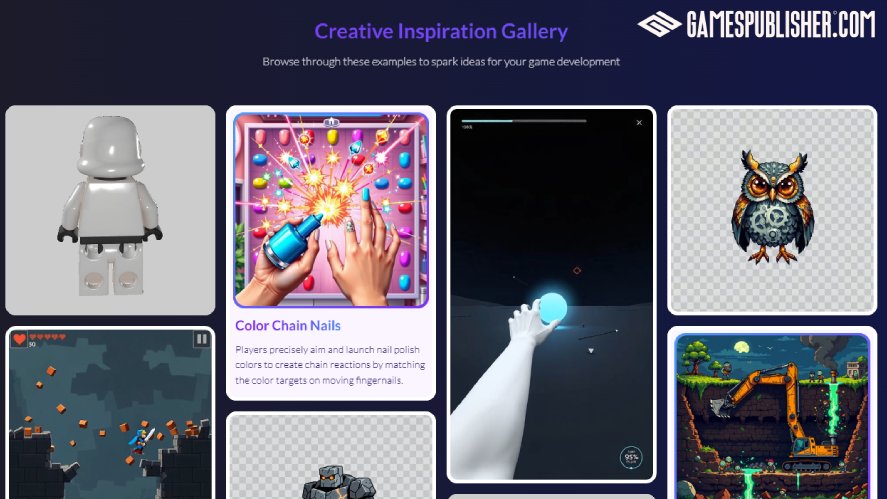
Ludo AI is a game ideation and research assistant. It analyzes market trends, gameplay loops, themes, and genres to help developers brainstorm new titles or refine existing concepts.
It can generate mechanics, character ideas, story beats, and reference games that align with your direction.
Ludo is often used early in pre-production, during game pitching, design documentation, or building the first playable prototype.
Cascadeur

Cascadeur uses physics-based AI tools to help animators produce lifelike character animations without needing extensive keyframing experience.
It can auto-detect motion curves, fix unnatural poses, and propose realistic trajectories for jumps, punches, falls, and other complex movements.
Developers can start with a rough pose, and Cascadeur will automatically smooth the motion and apply correct physics. It’s widely used in mobile games, fighting games, and action RPGs.
ChatGPT (for Narrative Design)
ChatGPT is used across the narrative pipeline, from generating quest ideas, draft storylines, and dialogue variations to rewriting conversations in specific tones or voices.
Designers use it to speed up branching dialogue creation, prototype narrative choices, or even debug plot holes.
With a creative prompt and lore document, ChatGPT can help establish worldbuilding, character motivations, or entire quest arcs. It also works well for naming, item descriptions, tutorial scripts, and more.
Choosing the Right AI Tool for Your Game Project
Selecting the best AI tool depends on your team’s structure, goals, and the type of game you’re building for AI game development projects:
- For Indie Developers: Tools like Leonardo AI, Scenario.gg, and ChatGPT are cost-effective and easy to adopt, helping small teams produce high-quality content quickly.
- For AAA Studios: Solutions such as Promethean AI, Inworld AI, and Cascadeur scale well and integrate smoothly into complex pipelines.
- For Early Prototyping: Ludo AI and ChatGPT help teams brainstorm mechanics, create early concepts, and accelerate pre-production.
- For Content-heavy Genres (RPG, Open World, Simulation): Inworld AI and procedural generation tools reduce workload on narrative and environment teams.
- For Fast Iteration: AI testing, balancing tools, and procedural systems allow constant tweaking without slowing development.
By choosing tools aligned with your genre, budget, and workflow, your team can dramatically improve efficiency and creative output.
Challenges and Limitations of AI Design Tools
While AI design tools offer incredible speed and efficiency, they are not a perfect solution. Developers must understand where these systems fall short to use them effectively and avoid overreliance.
Where AI Still Falls Short in Game Design
While AI design tools are powerful, they have notable limitations. AI lacks true creative intuition, which can lead to generic or repetitive content if not guided carefully.
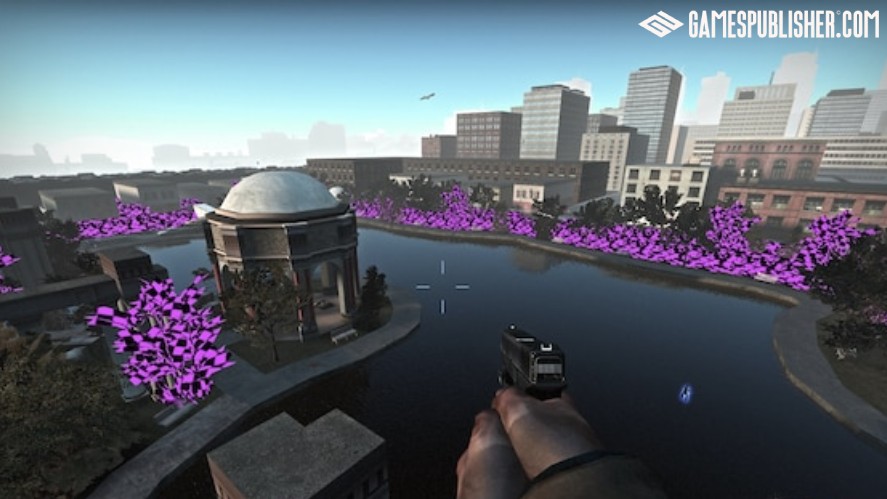
Procedural or AI-generated designs may miss subtle storytelling cues, emotional nuance, or cultural context that human designers intuitively incorporate.
Ethical concerns also arise: AI models trained on copyrighted or biased datasets can unintentionally reproduce protected art or reinforce stereotypes.
The Human-AI Collaboration Model
The most effective approach is human-AI collaboration. AI should enhance human creativity rather than replace it.
Designers, writers, and artists guide the AI, refine outputs, and make judgment calls that AI cannot.
This synergy allows teams to scale production, experiment with novel ideas, and iterate faster while maintaining the originality and emotional depth that players expect.
The Future of AI Design Tools in Game Development
AI design tools are evolving rapidly, and understanding emerging trends helps studios plan for the next decade of development innovation.
Emerging Trends in AI-Powered Game Design
Over the next 5–10 years, AI is expected to:
- Generate fully dynamic environments and adaptive worlds in real time.
- Create deeply responsive NPCs and branching narratives tailored to player behavior.
- Assist in automated testing, balancing, and predictive analytics for live-service games.
Integrate more seamlessly into collaborative pipelines, making ideation, prototyping, and iteration faster and more data-driven.
Will AI Replace Designers?
AI is unlikely to fully replace human designers. Instead, it augments creative roles, allowing designers to focus on high-level decision-making, storytelling, and artistic refinement.

While some repetitive or technical tasks may become automated, human judgment, intuition, and innovation remain irreplaceable. It ensures AI acts as a creative partner rather than a substitute.
Conclusion
AI design tools are transforming game development, giving studios faster workflows, scalable content creation, and new avenues for creativity.
However, AI is not a replacement for human creativity. Designers, writers, and artists remain essential for injecting emotional depth, cultural nuance, and originality into games.
The most successful studios will embrace a human-AI collaboration model, where AI handles repetitive or data-intensive tasks, and humans guide, refine, and innovate.
For both indie developers and AAA studios, exploring AI-powered design tools is no longer optional; it’s a competitive necessity.
By staying informed, experimenting responsibly, and balancing innovation with oversight, developers can create games that are not only efficient to produce but also engaging, unique, and player-focused.
Video game publishers and developers alike can use Gamespublisher.com as a resource for understanding how AI is shaping game design, helping them stay ahead in this rapidly evolving game publishing industry.
Loading survey...

